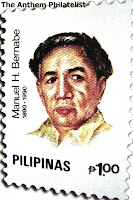The National Anthem of Monaco
 Monaco's first anthem dates from 1841. The first set of lyrics were used as a marching song for the Guarde Nationale, in which the author, Theophile Bellandro, was a captain. The music by Charles Albrecht along witht he lyrics were officially adopted in 1867. In 1931 new lyrics were written in Monegasque, the native language of Monaco. The official lyrics are just one verse, and are not often sung, except at official occasions.
Monaco's first anthem dates from 1841. The first set of lyrics were used as a marching song for the Guarde Nationale, in which the author, Theophile Bellandro, was a captain. The music by Charles Albrecht along witht he lyrics were officially adopted in 1867. In 1931 new lyrics were written in Monegasque, the native language of Monaco. The official lyrics are just one verse, and are not often sung, except at official occasions."A Marcia de Muneghu" (The March of Monaco) is Monaco's national anthem. Théophile Bellando de Castro wrote the lyrics and composed the music of the 1st edition of Hymne Monégasque in 1841, later Castil-Blaze modified the melody and made several other minor changes. In 1848 the National Guard, created by Prince Charles III, adopted Bellando's song and it became the March of the National Loyalists. In 1896 Charles Albrecht composed a new arrangement for piano, published by Tihebaux in Paris and called Air National de Monaco; in 1897 Decourcelle of Nice, printed an edition called 429 Hymne National de Monaco for piano.
Years later, François Bellini orchestrated the song by Albrecht; this new arrangement for a trio was judged to be too long for people in 1900 and ceased being played. The modern version was created by Léon Jehin in 1914 and was played for the first time during the 25th anniversary of the beginning Prince Albert's reign. Finally in 1931 Louis Notari wrote the lyrics in the Monegasque language. Only the Monegasque lyrics are official, reportedly dating back to a request from the Prince. The official lyrics contain only one verse. (The anthem is not usually even sung at all, except for official occasions.)
Louis Notari (Monaco, 1879-1961) Monégasque writer in French and Monégasque languages. He wrote the text of the Monaco national anthem and he is considered as the first writer in Monégasque; before him, there was just oral literature. He wrote 3 books. A legenda de Santa Devota/Santa Devota (1927) -about the legend of Saint Devota, Bülüghe munegasche (1941), Quelques notes sur les traditions de Monaco (1960).
Notari's writing in Monégasque has led to a veritable flowering of literature published in the language. A grammar and a dictionary by Louis Frolla and numerous other works, including by Georges Franzi, Louis Barral and Suzanne Simone (dictionary) Louis Canis, Jules Soccal, Lazare Sauvaigo and Robert Buisson, combine to allow this small country's own language to take its visible and permanent place among the other Romance languages.
The stamp above features Louis Notari, the anthem lyricist issued in 2000.






